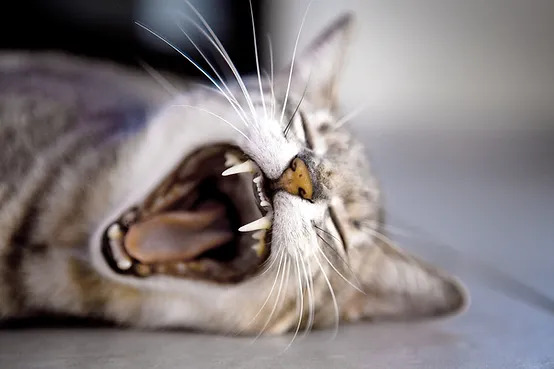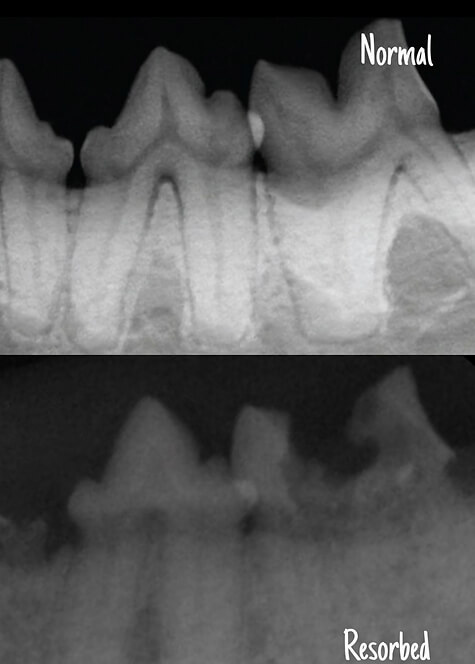Cats are special in an endless number of ways, but did you know their teeth are special too?

Cats are uniquely susceptible to developing resorptive lesions of the teeth. These lesions occur when the body begins to break down and reabsorb the enamel, dentin, and cementum that make up the hard surface of the tooth. This disease can be a painful process that may result in hypersalivation, bleeding from the mouth, and difficulty chewing. Some cats may not show any symptoms at all depending on the severity of the disease.
Resorptive lesions are categorized based on which part of the tooth is affected.
-
Type 1: localized lesion of the crown only, with intact roots and periodontal ligament
-
Type 2: generalized lesion with loss of periodontal ligament and root resorption, roots difficult to distinguish from the surrounding jaw bone

In the radiographs above, the tooth on the bottom right has a Type 2 resorption involving the crown and the roots. In some Type 2 resorptions, the crown may appear normal, requiring the use of radiographs to identify the disease!
Despite lots of research, the specific cause of tooth resorption isn't fully understood. Historically, resorptive lesions have been identified in ancient cat specimens that date back as far as the 13th century, but the prevalence of resorptive lesions increased significantly around the 1960's, raising suspicions that resorptive lesions may be exacerbated by modern aspects of domestication. There is also a strong link between inflammation or trauma that disrupts the integrity of the cells. A good oral hygiene routine such as toothbrushing reduces plaque buildup and inflammation, helping to prevent diseases associated with it. However, not all resorptive lesions are inflammatory, so it's difficult to proactively prevent them when the cause is still unknown.
The good news is that the treatment is simple: extract the tooth! This prevents further degradation of the tooth and eliminates the source of pain. Depending on the type and stage of resorption, the tooth may be fully or partially extracted. In Type 1 resorptions, the best treatment option is to remove the entire tooth. In Type 2 resorptions, only the crown may be removed if the roots are already fully resorbed by the body.
